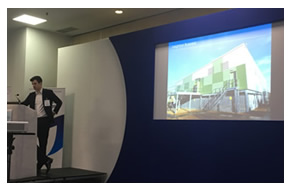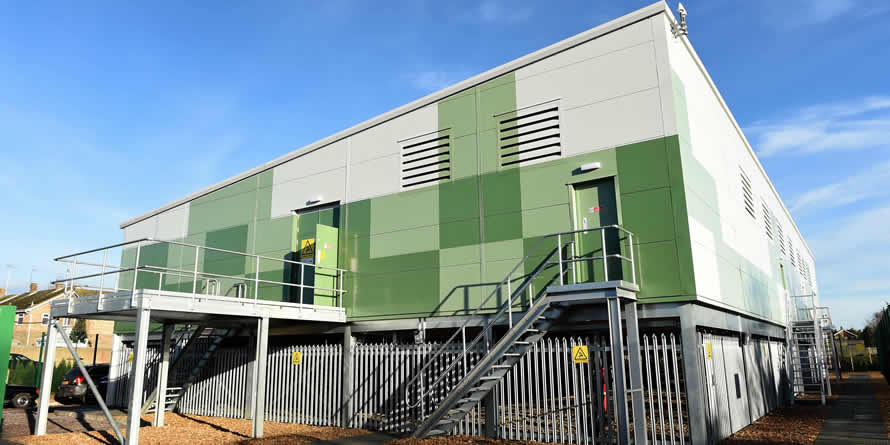Posted on: 09/02/2017
Yesterday, Angus Widdowson presented at the Energy Storage and Connected Systems conference, sharing our experience as a commercial partner on UKPN’s Leighton Buzzard battery storage project. Here he takes us through the lessons learned and what SmartestEnergy are doing on the back of this to build a viable route to market for grid scale projects.
 The Leighton Buzzard 6MW/10MWh Lithium-ion battery connected to the grid in November 2014. Our role as trading partner included providing access to the wholesale market via a live feed of half-hourly pricing and various optimisation techniques undertaken by our trading team.
The Leighton Buzzard 6MW/10MWh Lithium-ion battery connected to the grid in November 2014. Our role as trading partner included providing access to the wholesale market via a live feed of half-hourly pricing and various optimisation techniques undertaken by our trading team.
The inherent flexibility of our trading platform and commercial agreement allowed us to trial various business models on the Leighton Buzzard project.
Business Model 1 – stacking multiple revenue streams
The first model demonstrated the value of stacking multiple revenue streams, including peak shaving, Triads and arbitrage. This came with significant risk and relatively low certainty, particularly looking forward as a medium to long-term solution.
Along with our existing Triad optimisation service, we are working towards offering an enhanced service that would allow batteries to react right up to and within settlement periods based on current system demand.
Business Model 2 – Firm Frequency Response contract
The second model we trialled ran a static Firm Frequency Response (FFR) contract, along with Triad optimisation. This provided more certainty through the FFR availability payment from National Grid, with Triad optimisation revenue as an additional bonus.
Looking ahead, higher revenues can be achieved through dynamic FFR, a two-way response programme delivering higher value to National Grid.
The challenges…
One of the challenges for Leighton Buzzard, with this being an early project, was the capital cost of the battery. Lithium-ion battery costs are rapidly decreasing and have already reduced by 30% since the project was built.
Regulation presented another challenge, batteries are not currently recognised for the transitional role they play – they are only storing electricity rather than using it. Batteries are therefore being defined as both consumers and generators, so environmental levies and system costs are charged on imported power, restricting the benefits of arbitrage.
We are working with Ofgem and other stakeholders to look at how we can remove levies such as the Renewables Obligation, Feed-in-Tariff and Contracts for Difference charges, which would open up the opportunity for arbitrage as a revenue stream.
Developing our knowledge and capabilities
As an asset-light electricity supplier, SmartestEnergy has moved into the energy storage space from a different angle. We’ve used our route-to-market trading knowledge to build our aggregation capabilities, as the energy storage market evolves and projects move through the development process and into operation.
Being involved with the Leighton Buzzard project has given us the experience to build market leading capabilities and knowledge, which we have applied to more trial projects that are now operational.
What’s next?
As a sector we are now getting to a point where batteries can be developed on a commercially viable basis and as we all continue to work with the authorities leveling the playing field for this technology, we can see a number of projects moving into the development phase in the next 12 months.

 United States
United States Australia
Australia






